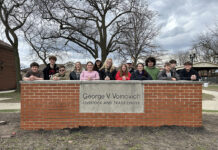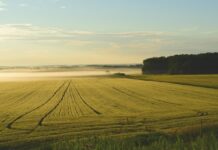With summer grazing giving way for fall and winter management over the next few weeks, it is time to take inventory of the forage available for your livestock. Along with the forage, the ability to access clean water is more important than usual this year.
Available forage includes the grasses and legumes currently in your pasture fields, plus what will still grow this fall; the hay fields that are available for grazing, the residue from the corn and soybean fields that are going to be harvested.
Other options include fields that have not been utilized for anything this year that are primarily grasses and legumes. With some electric fence, many areas that we do not traditionally consider pasture fields may be grazed for short periods of time if there is water available.
High and dry, or wet? Taking time now to evaluate what forage might be available will allow you to make the best decisions as to when you can graze the available forages. Consider the typical soil moisture conditions and the likelihood that fields will get wet or flooded as we move into fall and winter.
Areas that tend to get soft and muddy are good areas to graze soon if water is available. Areas that are high and dry, will serve well during the wet, muddy days mid-winter or early spring when the ground is not frozen.
Need water
Having a clean, plentiful supply of water is critical in selecting areas to be grazed. If there is not already a good spring development or well that supplies a tank in the field, consider the alternatives.
Is there a way to run a temporary waterline or hose to a temporary tank to supply the water while the forage is being utilized? Can you haul water and dump it into a temporary tank?
Is there a clean, easily accessible flowing stream that may serve as a short-term water supply without damaging the stream bank or becoming a health hazard to the livestock? Is there a public water supply that can be utilized to provide water to the area in question?
Can you allow the animals to have access back to an existing field for water while utilizing the forage in an area that they have not grazed?
Algae concern
With the concerns this summer related to the toxins associated with the blue-green algae, I do not recommend utilizing pond water if there is any question as to its quality, or if there is questionable algae present. Better to be safe than sorry when it comes to our animal health.
With the continued dry weather in some areas, there are many fields that typically have adequate water supplies that may need to have the grazing delayed this year, until the flow of our spring developments picks up or an alternate source of water can be provided.
An overall inventory of the available forage and water now will help you to better plan for the coming grazing and feeding season.
Remember that it is almost always more cost effective to allow the livestock to harvest the forage by grazing rather than for us to harvest and manage it as hay.
Grazing meeting, farm tour
For more information on these and other grazing related topics you may want to attend a pasture walk or upcoming meetings on related topics.
There is a grazing program scheduled at the Muskingum County Rural Services Building at 6 p.m. Nov. 3 to discuss several topics relevant to those interested in better grazing management and those new to management intensive grazing.
This is being followed up by a field day from 9:30 a.m.- 3 p.m. Nov. 6 starting at the Tim Kimpel farm, 6370 Rose Hill Road, Roseville, and ending at the Gary Allen farm about 3 miles south of Crooksville on Twp. Hwy 196 N.E. just off state Route 93.
There is no charge for the Wednesday evening program, but registrations for lunch on Saturday are required and the lunch cost is $10. Contact the Muskingum SWCD at 740-454-2767 for more information and reservations.












